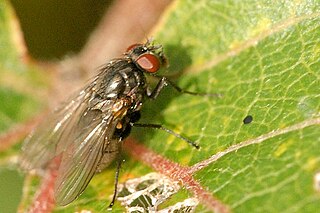
Fannia armata is a fly species in the Fanniidae family. This species is smaller and more slender than the house fly, Musca domestica, and is similar in appearance to the lesser house fly, Fannia canicularis. It is found in the Palearctic. For identification see
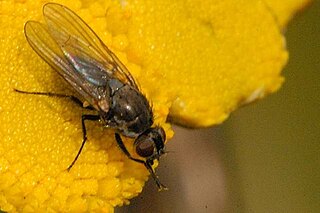
Fannia lepida is a fly species in the Fanniidae family. This species is smaller and more slender than the house fly, Musca domestica, and is similar in appearance to the lesser house fly, Fannia canicularis. It is found in the Palearctic. For identification see
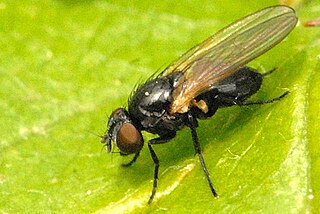
Fannia sociella is a fly species in the Fanniidae family. This species is smaller and more slender than the house fly, Musca domestica, and is similar in appearance to the lesser house fly, Fannia canicularis. It is found in the Palearctic. For identification see

Platycheirus discimanus, the Yellowfoot Sedgesitter is a small species of hoverfly. It is found across Europe and the Palearctic and in North America.
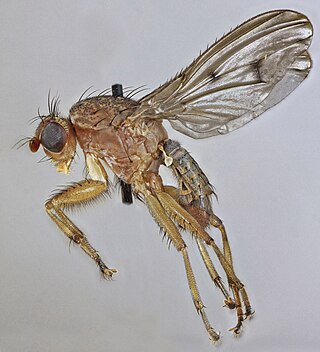
Suillia affinis is a species of fly in the family Heleomyzidae. It is found in the Palearctic.
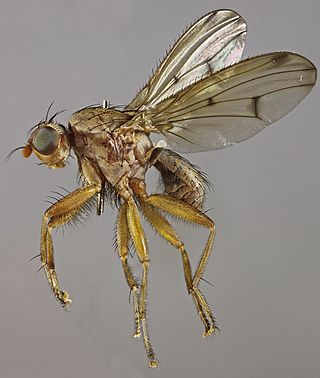
Suillia imberbis is a Palearctic species of Heleomyzidae.

Suillia variegata is a Palearctic species of Heleomyzidae.
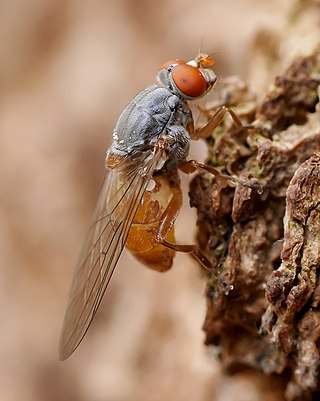
Brachyopa insensilis is a Palearctic species of hoverflies.

Lonchaea chorea is a species of fly in the family Lonchaeidae. It is found in the Palearctic. The larva develops in cow dung.
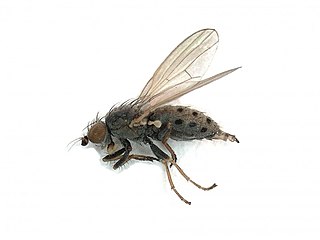
Chamaemyia flavipalpis is a species of fly in the family Chamaemyiidae. It is found in the Palearctic. and North Africa.

Morpholeria ruficornis is a species of fly in the family Heleomyzidae. It is found in the Palearctic.
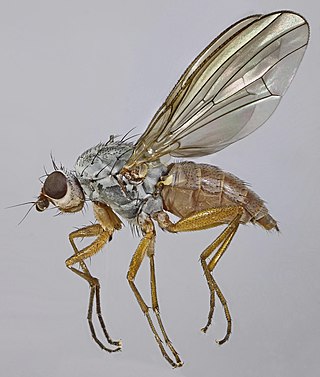
Tephrochlamys rufiventris is a species of fly in the family Heleomyzidae. It is found in the Palearctic .The body length is 5 to 6 mm. The head has both setae and bristles on the gena. The thorax is characterized by the presence of setae on the propleura, a bare prothorax and metathoracic setae in a 0+3 arrangement, with the first pair of suture setae lying closer to the suture than to the second pair. The posterior and anterior metathoracic setae are almost the same length, and the hairs between them are placed in more than four rows. The wings have short and monochromatic pterostigmas and spine-like bristles on the costal vein longer than the hair. The middle pair of legs has one well-developed spur on each tibia.For terms see Morphology of Diptera.

Elgiva cucularia is a species of fly in the family Sciomyzidae. It is found in the Palearctic .Long. : 5-8 mm.Overall it is coloured yellowish-brown with a bluish-gray body. The head is characterized by silky black dots at the bases of the anterior orbital setae, between the bases of the antennae and the edges of the compound eyes, and in the centre of the occiput. The third antenna segment is a little shorter than the second. The mesonotum is black with a grey ground and grey pruinosity.There are longitudinal, brown stripes on the dorsum of the thorax: two narrow in the middle and two wide on the sides. One mesopleural bristle amongst short setae.The prothorax is bare. The yellowish smoky wings are 5.2 to 6.8 mm long and have fuzzy spots on the front half. The legs and abdomen are yellow. The lower surfaces of the hind femora are equipped with setae, while the front pair lacks them.The abdomen is rufous.For terms see Morphology of Diptera. Larvae of E. cucularia are predators of aquatic, pulmonate snails in the families Lymnaeidae, Physidae, and Planorbidae.

Heteromyza rotundicornis is a species of fly in the family Heleomyzidae. It is found in the Palearctic.

Limnia unguicornis is a species of fly in the family Sciomyzidae. It is found in the Palearctic.

Pegomya bicolor is a species of fly in the family Anthomyiidae. It is found in the Palearctic. For identification see Host plants include Persicaria virginiana, Rumex acetosa, Rumex acetosella, Rumex conglomeratus, Rumex crispus, and Rumex obtusifolius.
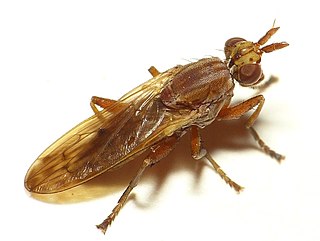
Elgiva solicita is a species of fly in the family Sciomyzidae. It is found in the Palearctic
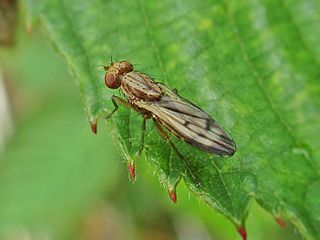
Opomyza petrei is a species of fly in the family Opomyzidae. It is found in the Palearctic.

Sphegina clunipes is a Palearctic species of hoverfly.
Neoascia geniculata is a Palearctic species of hoverfly.





















